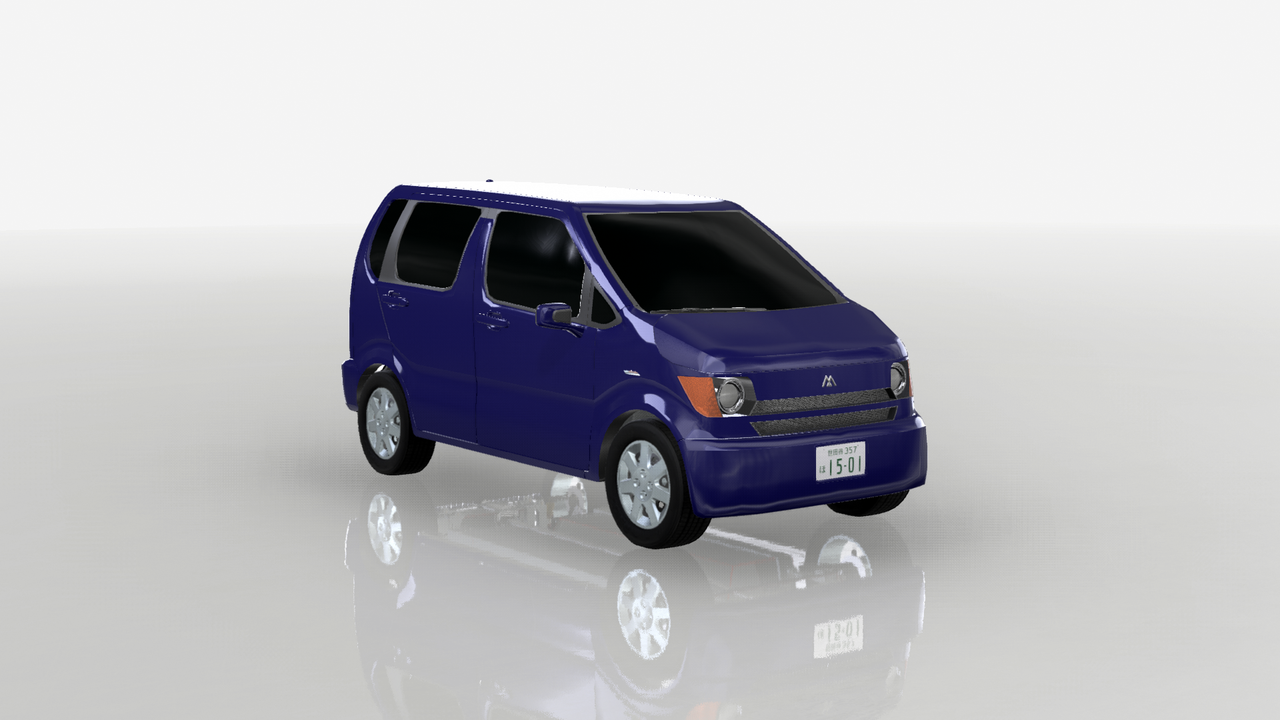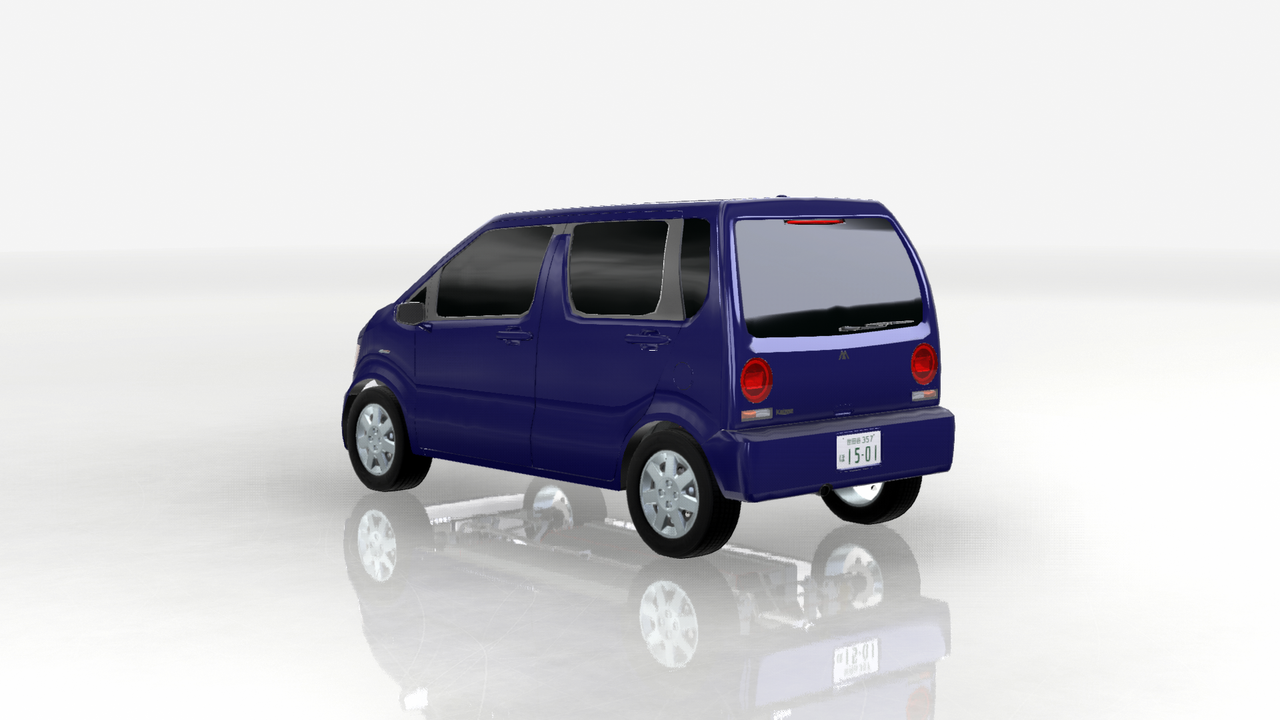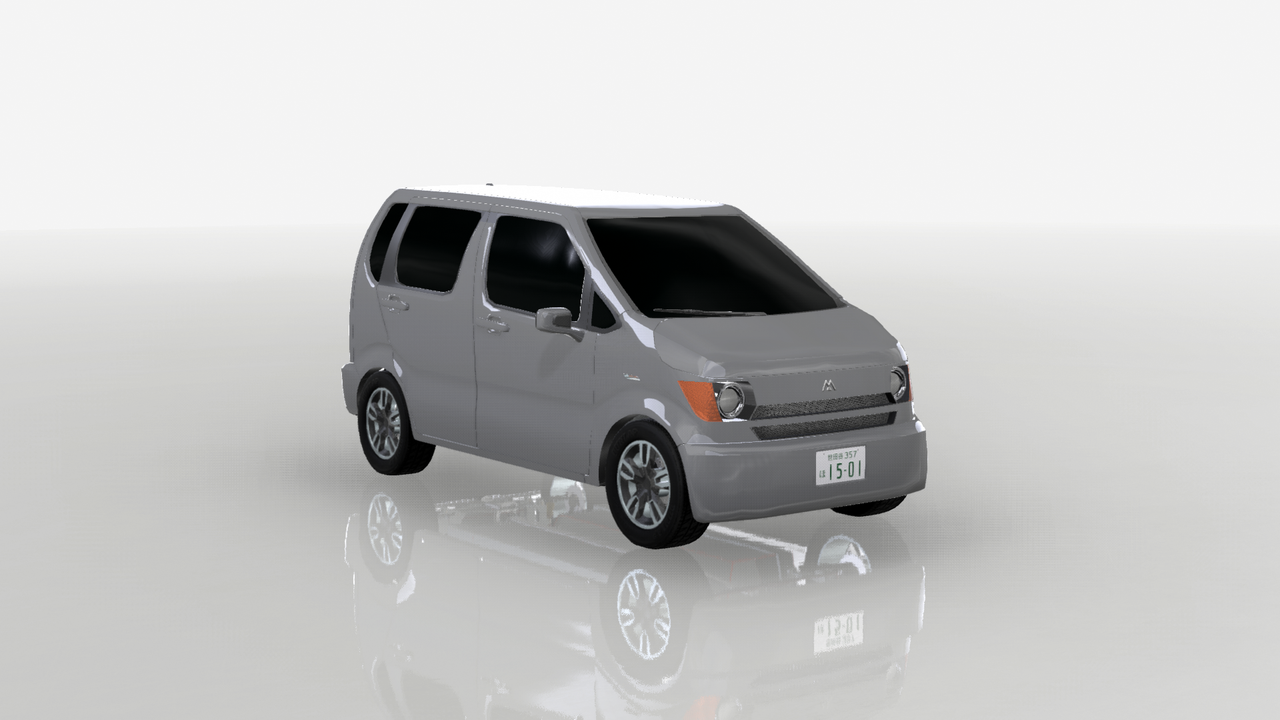While the 660 cc flat-four engine used in the Karai was novel and helped lower the car’s centre of gravity, a three-cylinder of comparable displacement would ultimately be less complex, more reliable, and capable of a higher torque output. The Kaizoe’s inline-three, in particular, made 89 Nm (66 ft-lb) of torque over the 77 Nm (57 ft-lb) of the Karai’s flat-four, supplementing the maximum of 47 kW (63 hp) allotted to kei cars and allowing for a lower redline. Once again, the standard model (designated “T” for “turbocharged”) was offered alongside the S model, which lost 49 kg (108 lb) of weight and came with alloy wheels and a stiffer suspension tune.
While the more agile Karai was somewhat lacking in practicality, the Kaizoe easily solved such issues while retaining the charm of its predecessor.
T


Layout FF
Engine Name MIK2-3D
Aspiration TB
Displacement 659 cc
Peak Power 47 kW (63 hp) @ 6500 RPM
Peak Torque 89 Nm (66 ft-lb) @ 3300 RPM
Weight 1098 kg (2421 lb)
Weight Distribution Front/Rear 56/44
STARTING PRICE
¥1,070,000 JDM
COLOURS
Ardour Red
Tangerine
Hornet Yellow
Vivid Green
Electric Blue
Legacy Coastal Blue
Sandy Khaki
Katsuobushi
Ethereal White
Legacy Snow Grey
Sumi Black
S


Layout FF
Engine Name MIK2-3D
Aspiration TB
Displacement 659 cc
Peak Power 47 kW (63 hp) @ 6500 RPM
Peak Torque 89 Nm (66 ft-lb) @ 3300 RPM
Weight 1049 kg (2313 lb)
Weight Distribution Front/Rear 56/44
STARTING PRICE
¥1,230,000 JDM
COLOURS
Ardour Red
Tangerine
Hornet Yellow
Vivid Green
Electric Blue
Legacy Coastal Blue
Sandy Khaki
Katsuobushi
Ethereal White
Legacy Snow Grey
Sumi Black